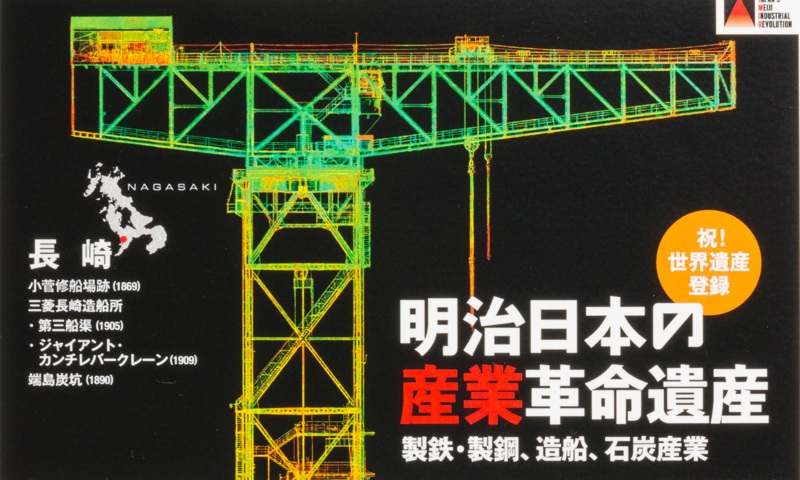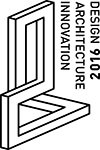An industrial heritage site in Japan that earned UNESCO World Heritage Status with the help of data created by the Centre for Digital Documentation and Visualisation (CDDV) - a partnership between Historic Environment Scotland and The Glasgow School of Art’s Digital Design Studio - has been celebrated with the creation of commemorative coins and postage stamps.
The Scottish-designed and built Giant Cantilever Crane, and No. 3 Dry Dock in Nagasaki, Japan, are two of four historic monuments in the The Meiji Industrial Revolution World Heritage Site to be marked by the Japanese Government, using 3D visualisations created by the Scottish Ten team.
Built by Appelby of Glasgow and erected by the Motherwell Bridge Company over 100 years ago, the Nagasaki crane remains in service to this day, and is the same principle design as the iconic cranes on the River Clyde, including ‘Titan’ in Clydebank, Finnieston and James Watt Dock in Greenock. Nagasaki’s No. 3 Dry Dock, meanwhile, was the largest dock in Asia when it was built in 1905, and is the only Meiji era dock still in operation over a century later.
The Giant Cantilever Crane and dry dock are important components of The Meiji Industrial Revolution World Heritage Site, which also includes the abandoned Hashima Island, which featured in the James Bond film, Skyfall.
The coins and stamps were presented to staff from the Scottish Ten project who digitally documented the crane, the No 3 Dry Dock, the Kosuge Dock, and Hashima Island in late 2014. The data was integral to the Japanese Government’s bid to have the sites of Japanese Industrial Heritage collectively recognised by UNESCO as being of Outstanding Universal Value, and inscribed as a World Heritage Site, which was achieved in 2015 at the same time as the Forth Bridge.

The Scottish Ten is a ground-breaking international 3D project using laser scanning to document digitally Scotland’s as-then five World Heritage Sites and five international sites. It has been delivered as a partnership between specialists at Historic Environment Scotland and experts in 3D visualisation at The Glasgow School of Art’s Digital Design Studio, together with not-for-profit digital heritage organisation CyArk. The team worked closely with the Japanese Government’s Cabinet Secretariat and the National Congress on Industrial Heritage, led by Koko Kato, to deliver the project in Japan.
Dr Lyn Wilson, Digital Documentation Manager at Historic Environment Scotland and project manager at CDDV said: “As part of the Scottish Ten project, my team and I were delighted to be given the opportunity to document digitally the iconic Nagasaki Crane, the No 3 Dry Dock, and other fantastic sites. The Japanese are rightly very proud of these important, extremely well preserved monuments to their industrial heritage, and we in Scotland should be proud of them too, as many were designed and built by pioneering Scottish engineers.”
Alastair Rawlinson, Head of Data Acquisition at The Glasgow School of Art, and GSA lead for the Scottish Ten project, added, “We were very pleased when the sites were recognised as being of Outstanding Universal Value by UNESCO. The creation of these stamps and coins not only helps to celebrate that, but potentially raises awareness of these sites to people in Japan and further afield, helps to protect them in the long run, and strengthens historic links between our two countries.”
Koko Kato, Director of the National Congress of Industrial Heritage and Special Advisor to the Japanese Government said: “We are delighted to have collaborated with the CDDV team to digitally document the Meiji Industrial Heritage Sites, and for these to be recognised by UNESCO in 2015. We are now excited to commemorate the global significance of these sites through the issue of these special stamps and coins, which continues our partnership with CDDV.”
The coins are made of silver and weigh approximately 20 grams, with a diameter of 35 mm. 20,000 sets of the coins have been minted. They are available for purchase via the Japanese mint.

The Giant Cantilever Crane
The Crane is thought to have been ordered on the advice of Fraserburgh-born Thomas Blake Glover, who is regarded as a key figure in the industrialisation of Japan in the late 19th and early 20th Centuries. It was designed by the Glasgow Electric Crane and Hoist Company, which had previously bought the engineering company, Appleby. It was erected by the Motherwell Bridge Company in 1909, sits in the heart of Nagasaki Harbour - the birthplace of Mitsubishi Heavy Industries. Giant Cantilever Cranes were state-of-the-art structures designed to lift, with the utmost accuracy, the heaviest and most valuable components into the hulls of ships under construction, being re-fitted or undergoing repair.
The Crane was considered to be so important that it has been included in the ‘Sites of Japan’s Meiji Industrial Revolution’ World Heritage nomination, submitted by Japan in January 2014, for consideration by UNESCO’s World Heritage Committee in 2015.
For more information on the project to scan the Nagasaki Crane and No. 3 Dry Dock visit the Engine Shed website
For more information on the Meiji World Heritage site visit the UNESCO website
Notes for editors:
The Scottish Ten is a collaboration between specialists at Historic Environment Scotland, experts in 3D visualisation at The Glasgow School of Art’s Digital Design Studio, and not-for-profit digital heritage organisation CyArk. The project aims to digitally document Scotland’s as-then five UNESCO World Heritage Sites and five international heritage sites to foster global collaboration and build lasting partnerships based on cultural connections. In addition to Nagasaki’s industrial heritage, international sites in the USA (Mount Rushmore National Memorial), India (Rani ki Vav stepwell), China (the Eastern Qing Tombs) and Australia (Sydney Opera House) have been documented through the project.
The Glasgow School of Art (GSA) is internationally recognised as one of Europe's foremost higher education institutions for creative education and research in fine art, design and architecture. The Digital Design Studio (DDS) is a world leading research and postgraduate centre of the GSA specialising in 3D digital visualisation and interaction technologies. It combines academic, research and commercial activities. The experts at the Digital Design Studio are currently creating the 3D scans for the widely admired Scottish Ten as a partner in the Centre for Digital Documentation and Visualisation. Other areas of DDS research include ground-breaking medical visualization, Marine Visualization and Auralisation and sound. http://www.gsa.ac.uk/research/research-centres/school-of-simulation-and-visualisation/
The Centre for Digital Documentation and Visualisation LLP (CDDV) was established in 2010 as a partnership between Historic Environment Scotland and The Glasgow School of Art. The partners aspire to create a world leading centre for the digital documentation and visualisation of the historic environment and to realise the benefits for Scotland. The Centre was created as the vehicle to deliver cutting edge technology together with renowned expertise from Historic Environment Scotland and The Glasgow School of Art. The Centre will promote and celebrate Scotland’s cultural heritage at home and abroad and enhance Scotland’s reputation for developing world class and innovative research and development. It has delivered the digital documentation of the five Scottish World Heritage Sites and five International Heritage Sites in a project known as the Scottish Ten, creation of digital media content for the Battle of Bannockburn Centre and other projects on a case by case basis. For more information, contact cddv.enquiries@gmail.com
CyArk is a non-profit entity whose mission is to digitally document cultural heritage sites through collecting, archiving and providing open access to data created by laser scanning, digital modelling, and other state-of-the-art technologies. For more information visit www.cyark.org
About Historic Environment Scotland (HES)
- As of the 1st October 2015, Historic Scotland and RCAHMS came together to form a new lead public body charged with caring for, protecting and promoting the historic environment. The new body Historic Environment Scotland (HES) will lead on delivering Scotland’s first strategy for the historic environment, Our Place in Time.
- Historic Scotland is a sub brand of HES.
- View our press pack and keep up to date by registering for media release email alerts. If you wish to unsubscribe, please contact us.
Year of Innovation, Architecture and Design 2016
2016 is the Year of Innovation, Architecture and Design (IAD). Through a series of exciting events and activity, the year will showcase Scotland's position as an "innovation nation", its outstanding built heritage, and its thriving, internationally acclaimed creative industries sector. This is a Scottish Government initiative being led by VisitScotland and supported by a variety of partners.
Follow Historic Environment Scotland
Twitter: @HistEnvScot | @welovehistory
Facebook: @HistoricEnvScotland | @VisitHistoricScotland
For further information, please contact:
Ali George
Historic Environment Scotland Media Office
Direct Line: 0131 668 8714
Mobile: 07583 018 790
ali.george@hes.scot
Lesley Booth
Glasgow School of Art
Mobile: 07799 414 474
press@gsa.ac.uk



